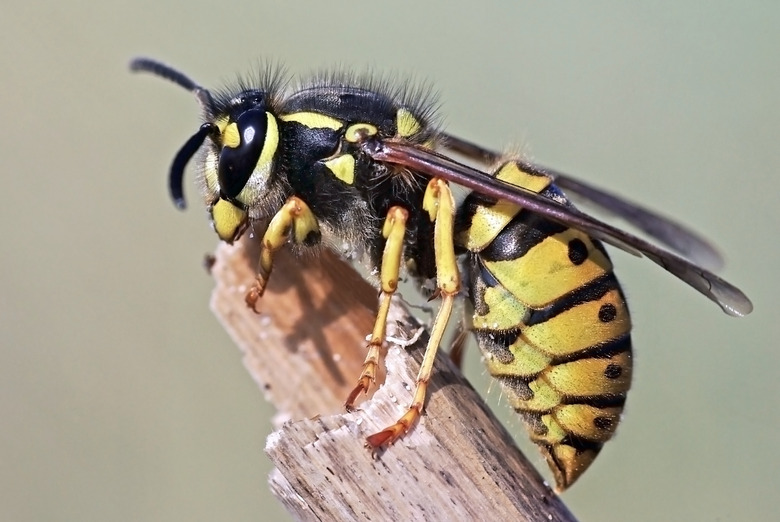How To Identify Wasps & Bees
Though they have some similarities, wasps and bees are distinctively different insects. Knowing how to tell them apart can be useful, especially if you encounter them while spending time outdoors, or you find a nest.
Wasps
Wasps
With the exception of Africanized bees, wasps (also known as hornets), are much more aggressive than bees. Unlike bees, which just feed on nectar, wasps also feed insects to their young. Though you might think of a bee sting as painful, the truth is that a wasp sting is even more excruciating. While bees can only sting once, wasps will sting repeatedly.
Paper Wasp
Paper Wasp
Paper wasps have a segmented, slim body that features pale yellow and black striping. They have dangling legs and fly slowly, compared to other wasps. They prefer nesting in attics, but will also nest under deck railings, in mailboxes and light fixtures.
European Paper Wasp
European Paper Wasp
With bright yellow and black stripes, this wasp hails from Europe and resembles a yellow jacket. Its slimmer waist and large body makes this wasp a little more intimidating, and typically grows to one inch in size. The European wasp has brown wings, yellow legs and a pale face. This wasp likes to nest in cavities, including rain gutters, downspouts, bird houses, pipes, hollow logs and trees.
Yellow Jacket
Yellow Jacket
Yellow jackets have distinctive bright yellow and black striping around the abdomen and on the front of the head. Their face is yellow and they have dark eyes. They also have large, conspicuous antennae. They are social insects that are attracted to sweet drinks, fruit and meat. It's often the yellow jacket that will make its way into a soda can, potentially spoiling a picnic. Yellow jackets set up residence in a wide variety of locations, including trees, roof eaves and within walls.
Bees
Bees
Bees are less aggressive insects than wasps. Generally, they will only sting if they feel cornered and threatened.
Honeybees
Honeybees
These busy insects are between 1/2-inch to 3/4-inch in size. Their color varies, according to region. In some areas of the country they are orange-brown in color, while in other regions they are almost black. They are social insects that live in large colonies containing 20,000 to 80,000 bees. Honeybees are best known for their namesake: making honey.
Bumble Bees
Bumble Bees
Bumble bees are large, hairy insects that are usually bright yellow and black in color, although some species are red and orange. They are big insects, usually more than an inch in length. Their hind legs are hairy and are known for storing pollen as they forage. Female bumblebees have a pointed abdomen and a stinger while male bumblebees have a rounded abdomen and no stinger. Bumblebees are social insects that make their homes underground in abandoned animal tunnels and burrows.
Carpenter Bee
Carpenter Bee
Carpenter bees are often mistaken for bumblebees, because they are similar in shape. Carpenter bees are 1/2-inch to 1-inch in size. The upper surface of their abdomen is shiny and black and their wings are brown. Male carpenter bees have a pale yellow face, while female faces are black. They are solitary insects that construct single nests in exposed, unpainted, weathered wood.
Cite This Article
MLA
Bawden-Davis, Julie. "How To Identify Wasps & Bees" sciencing.com, https://www.sciencing.com/how-to-identify-wasps-bees-13406632/. 12 March 2018.
APA
Bawden-Davis, Julie. (2018, March 12). How To Identify Wasps & Bees. sciencing.com. Retrieved from https://www.sciencing.com/how-to-identify-wasps-bees-13406632/
Chicago
Bawden-Davis, Julie. How To Identify Wasps & Bees last modified March 24, 2022. https://www.sciencing.com/how-to-identify-wasps-bees-13406632/
